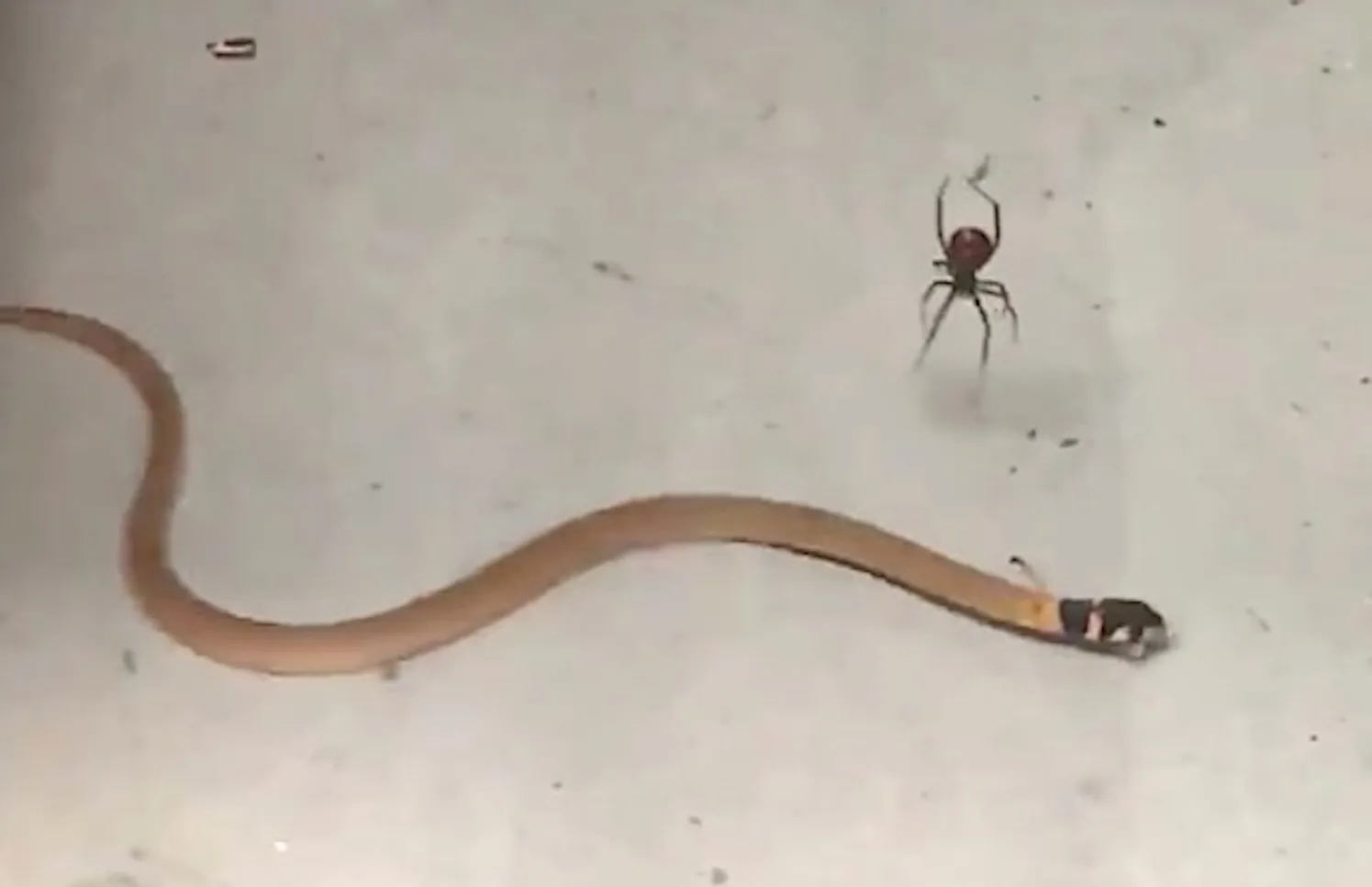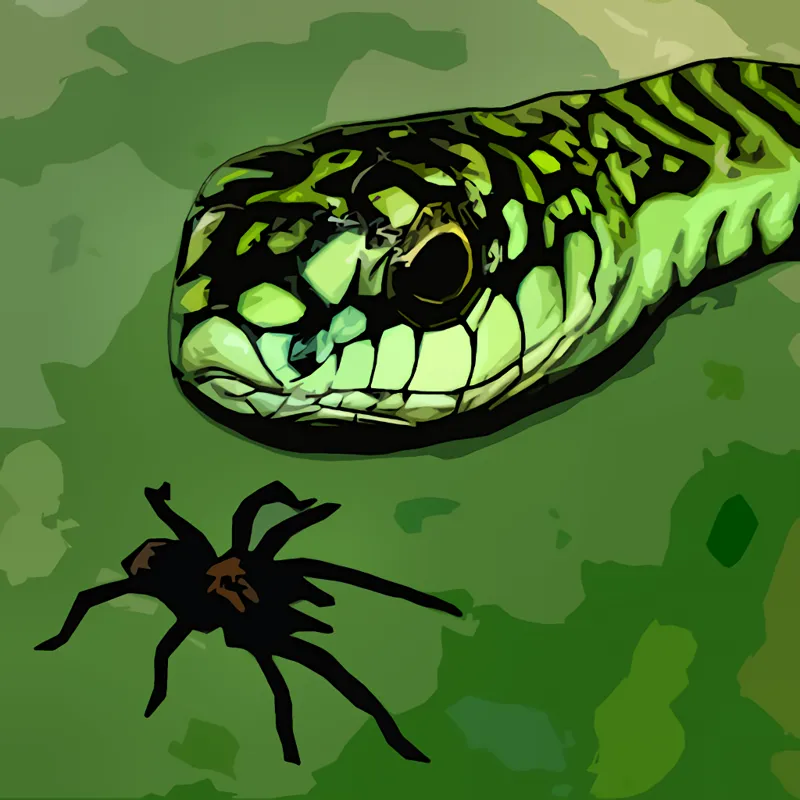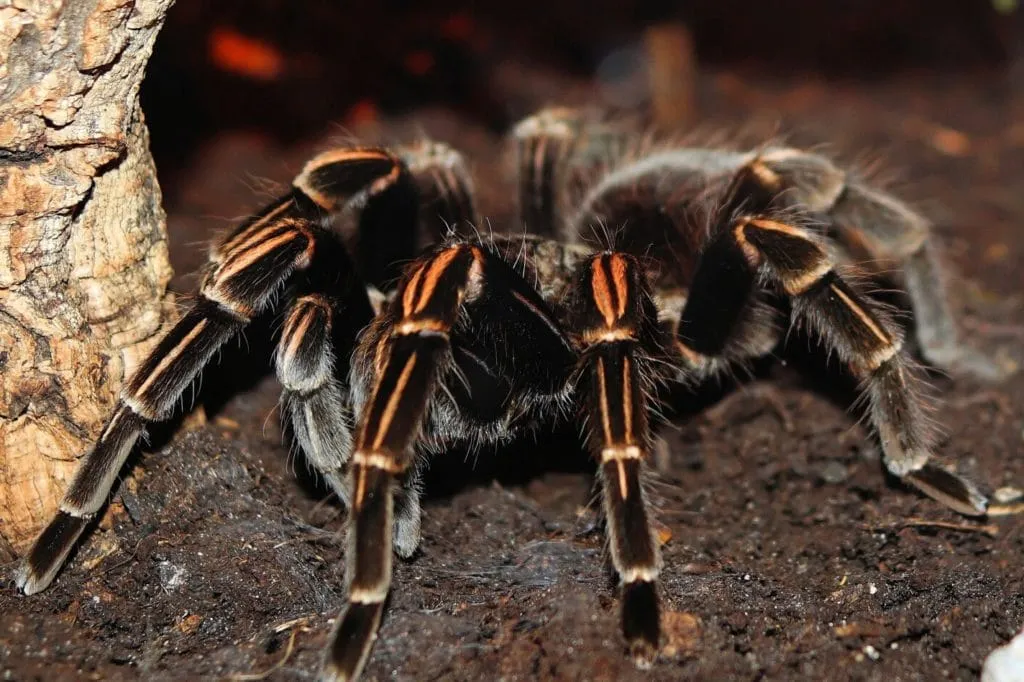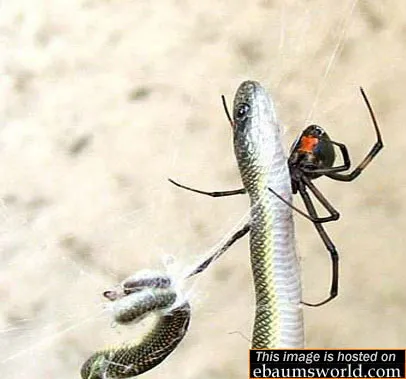Understanding the Combatants Tarantula and Snake
The confrontation between a tarantula and a snake is a dramatic display of nature’s raw power and survival instincts. Analyzing such a fight requires understanding the strengths and weaknesses of each combatant. This analysis goes beyond mere speculation; it involves a scientific approach to predict the outcome of this epic battle. The aim is to break down the key elements that determine victory, giving insight into the intricate dance of predator and prey. Understanding the anatomy, attack strategies, and influencing factors can help evaluate the possibilities.
Tarantula Anatomy and Strengths
Tarantulas, with their imposing size and venomous fangs, are formidable opponents. Their anatomy is finely tuned for both hunting and defense. Their bodies are covered in urticating hairs that they can flick at threats, causing intense irritation. Their multiple pairs of legs provide agility and speed across varied terrains, from the forest floor to rocky surfaces. These spiders also possess chelicerae, which are the fangs used to inject venom into their prey. The combination of physical prowess and chemical weaponry makes them a threat to a snake, especially a smaller one.
Venom and Fangs

The venom of a tarantula is a crucial element of its offensive strategy. While not typically lethal to humans, tarantula venom is designed to incapacitate prey swiftly. The venom contains a cocktail of toxins that can cause paralysis, making it difficult for the snake to react. The fangs, which are used to deliver the venom, are sharp and strong. This ensures that the venom is injected effectively during a bite. The efficiency of venom delivery is a key factor that impacts the fight’s dynamics.
Size and Agility
The size of a tarantula can vary greatly depending on the species, with some being significantly larger than others. The larger tarantulas have an advantage in terms of reach and the ability to inflict a more powerful bite. Agility is also a crucial factor, as tarantulas can move quickly and change direction unexpectedly. This agility helps them avoid the snake’s strikes and position themselves strategically. The interplay between size, and speed creates a complex dynamic in the fight.
Snake Anatomy and Strengths
Snakes, with their slender, muscular bodies and specialized hunting techniques, are also formidable predators. Their anatomy is designed for constriction or venomous attacks, both of which are highly effective against a wide range of prey. The snake’s flexible jaws and expandable bodies allow them to consume prey much larger than their heads. Snakes also have a keen sense of smell, which they use to locate prey and assess potential threats, allowing for an efficient strike or defensive strategy.
Venom and Constriction

Venomous snakes have evolved sophisticated systems for delivering their toxins. The potency of the venom varies among species, with some snakes capable of delivering a deadly dose in a single bite. Non-venomous snakes, like constrictors, rely on squeezing their prey until they suffocate. The snake’s powerful muscles allow it to quickly wrap around a tarantula, making it difficult for the spider to move or attack. This combination of methods determines the fight’s balance.
Size and Striking Ability
The striking ability of a snake is one of its most impressive traits. Snakes can strike with incredible speed and precision, often catching their prey off guard. The length of the snake and its muscle strength determines the striking distance and force. The size of the snake is also a critical factor, with larger snakes having an advantage in terms of both reach and the ability to constrict. The ability to effectively deploy an attack is essential to determine the victor.
Analyzing the Fight Dynamics
The dynamics of a fight between a tarantula and a snake are complex. It depends on the tactics and strategies employed by each combatant. Analyzing these strategies helps predict the outcome. Understanding the techniques and defensive capabilities is vital. Each species has unique strengths and weaknesses that dictate the flow of the battle. This analysis is important to estimate the survival chances of each species.
Attack Strategies and Techniques

Tarantula’s Offensive Moves
Tarantulas primarily rely on their venomous bite and the use of their fangs. The spider’s offensive strategy involves quickly injecting venom into its opponent to cause paralysis. Tarantulas may also use their urticating hairs as a defense mechanism, which can irritate the snake. The tarantula tries to maneuver to gain an advantage, possibly avoiding any direct attacks, and then quickly strikes.
Snake’s Offensive Maneuvers
Snakes employ either constriction or venomous bites as their primary offensive methods. Constrictors use their powerful muscles to squeeze the prey, preventing breathing. Venomous snakes quickly strike and inject venom. They also assess the position and potential countermoves by the tarantula before attacking. This assessment allows the snake to have an efficient strike, and can also lead to avoiding the opponent’s offensive attacks.
Defensive Capabilities

Tarantula’s Defense
Tarantulas rely on a combination of their size, speed, and the ability to flick urticating hairs to defend themselves. Their exoskeletons also offer some protection against bites. The spider will attempt to evade the snake’s strikes, utilizing its agility. The tarantula will attempt to defend by minimizing exposed areas of its body, to prevent the opponent from attacking the vulnerable sections.
Snake’s Defense
Snakes primarily rely on their speed and the ability to strike from a distance to defend themselves. Their scales also provide some protection. Non-venomous snakes use their bodies to protect themselves from attacks. They also may choose to quickly retreat from the attacks of the tarantula.
Factors Influencing the Outcome

Several factors can sway the outcome of a fight between a tarantula and a snake. Size and weight play significant roles, as does the potency of the venom. The environment and terrain also affect the battle’s flow. These variables add complexity to the prediction of who wins. Each factor contributes to the ultimate outcome of this dramatic confrontation.
Size and Weight Advantages
Size and weight can greatly impact the outcome of the fight. A larger tarantula has a greater reach and can deliver a more powerful bite. A larger snake can constrict its prey more effectively. In many cases, the larger animal has a significant advantage, as size often correlates with greater strength and resilience. However, agility and speed are important, as the smaller opponent can use this factor to win.
Venom Potency
The venom’s potency is a crucial factor for venomous species. More potent venom can quickly incapacitate the opponent, which gives the advantage to the predator. The amount of venom injected also matters, with a larger dose having a more significant effect. The ability of a snake’s venom to shut down a tarantula can quickly end the fight. The potency of venom can result in quickly tipping the battle in the snake’s favor.
Environment and Terrain

The environment and terrain where the fight takes place can influence the outcome. A cluttered environment can favor a tarantula, which can use its agility to maneuver. Open terrain might favor a snake, allowing it to strike from a distance. Environmental factors, such as temperature and humidity, can also affect the animals’ performance. An appropriate habitat can also be an advantage for a tarantula, providing protection and creating a better strike environment.
Predicting the Winner
Predicting the winner of a fight between a tarantula and a snake requires a careful assessment of all the factors. Considering the species, the size of the combatants, and the environment is vital. There is no single correct answer in this calculation. However, the analysis helps to understand which factors are most important in determining the victor. Understanding these factors increases the probability of making a more educated guess.
Key Indicators to Watch
When watching a fight, key indicators can help gauge the potential winner. These include the initial attack, the effectiveness of the venom or constriction, and the ability of each animal to defend itself. The speed and agility of the animals, as well as their stamina, are also important factors. Pay close attention to the snake’s striking ability and the tarantula’s defensive actions. Analyzing these indicators will increase the chance of predicting the winner.
The Verdict
Determining the winner between a tarantula and a snake is a complex calculation. Depending on the species and the environment, either animal can win. The fight is often determined by the strengths of the contestants. The snake often wins if it can successfully strike and deploy the venom or constrict the tarantula. The spider may win, using its fangs or its defense mechanisms, if it has the ability to inject the venom. Ultimately, the fight demonstrates the survival dynamics of nature.
